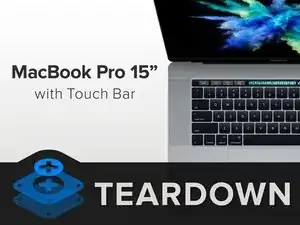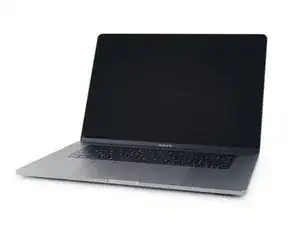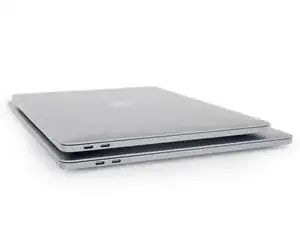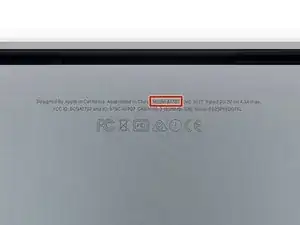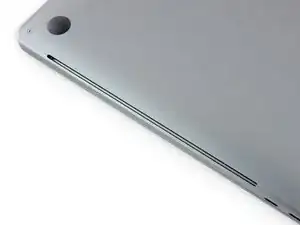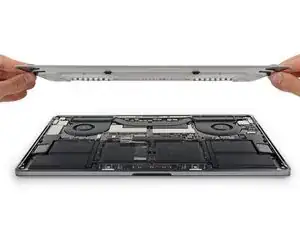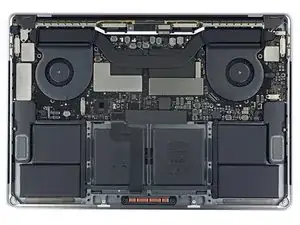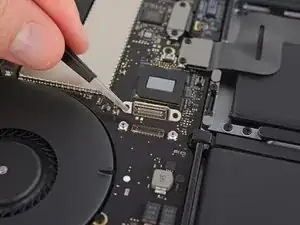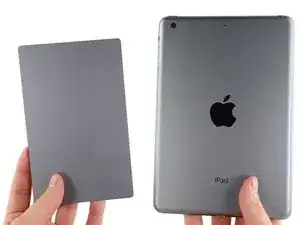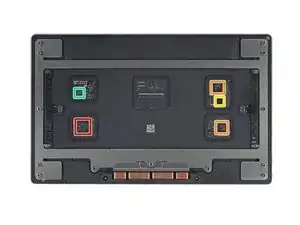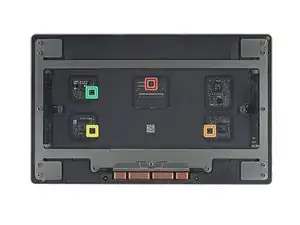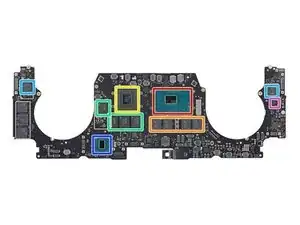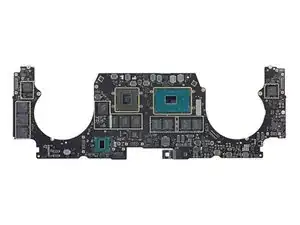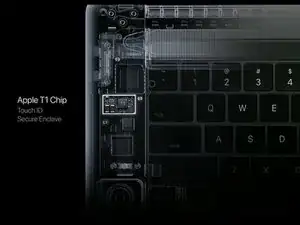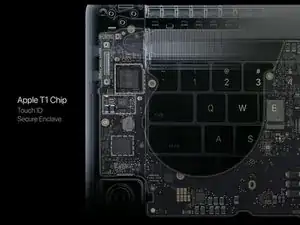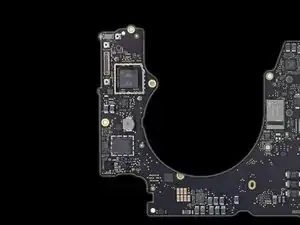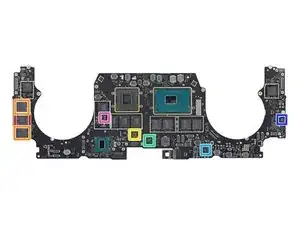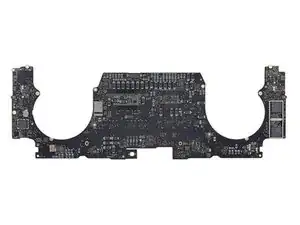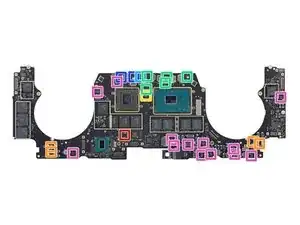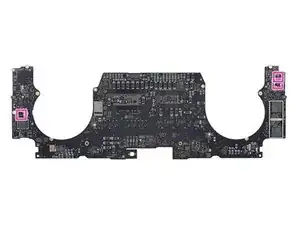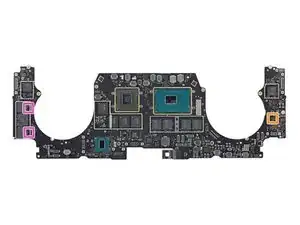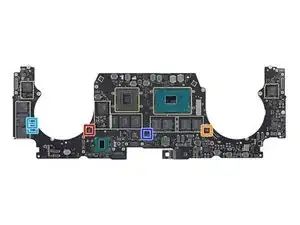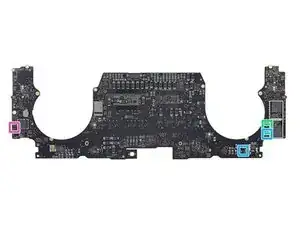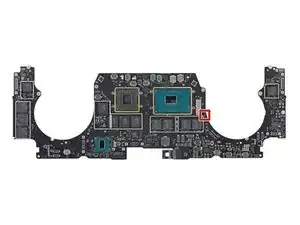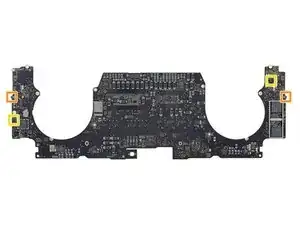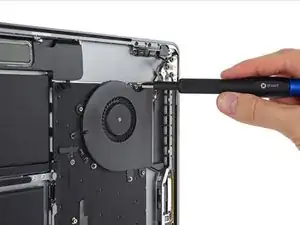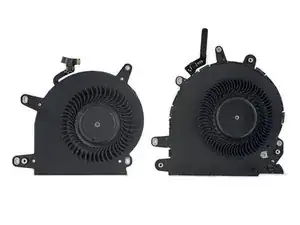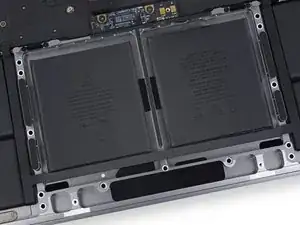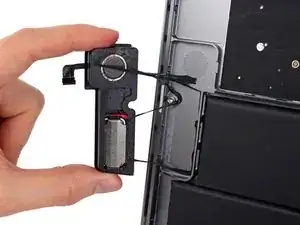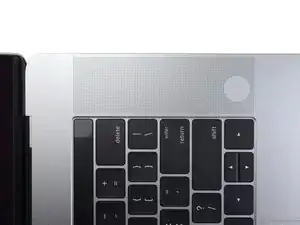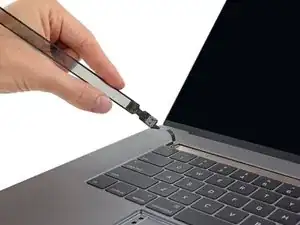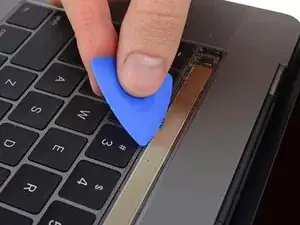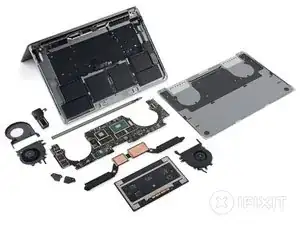Introduction
Apple announced a trio of new laptops, and boy are they keeping our teardown table busy. We started with the entry-level MacBook Pro "Escape Edition," and today we've reached the top of the line. With twice the fans, over a million more pixels, and the new Touch Bar that attempts to replace our tried-and-true function keys, it can only mean one thing: it's time to tear down the new 15" MacBook Pro with Touch Bar.
Can't get enough of our teardowns? Follow along on Facebook, Instagram, or Twitter to keep in touch with the latest and greatest hardware teardowns and repair news!
Tools
-
-
The MacBook Pro 15" packs a million pixels over the 13-inch models we've already torn down. Here's a preview of the tech we're expecting to find inside today:
-
15.4" LED-backlit Retina display with 2880 × 1800 resolution (220 dpi), P3 color gamut
-
2.6 GHz Skylake quad-core Intel Core i7 (Turbo Boost up to 3.5 GHz) with integrated Radeon Pro 450 with 2GB of GDDR5 memory
-
16 GB of 2133 MHz LPDDR3 onboard memory
-
256 GB PCIe-based onboard SSD (Configurable to 512 GB, 1 TB, or 2 TB SSD)
-
Four Thunderbolt 3 (USB-C) ports supporting charging, DisplayPort, Thunderbolt, USB 3.1 Gen 2
-
Touch Bar with integrated Touch ID sensor
-
Force Touch trackpad
-
-
-
Stack them if you have them. Here we have the MacBook Pro 13" layered on top of today's main attraction, the MacBook Pro 15"—and apart from the size difference, they appear near identical. We're itching to see how similar (or not) they are inside.
-
The MacBook Pro 15" identifies as model A1707, which fits nicely between the A1706 and A1708 from our previous two teardowns.
-
Just like the previous MBP line, there are long air intake vents under the left and right sides. If this computer is anything like its little brother, these vents should serve double-duty as speaker outlets.
-
-
-
Houston, we have lift-off! This teardown has achieved first stage separation.
-
On initial inspection, the 15" MBP looks ... like a scaled up version of the 13" model. We do notice a difference in the battery layout, but overall it's like looking at twins.
-
Look who we ran into again! The connector to nowhere.
-
We'd still rather see a removable/upgradeable SSD, particularly in a machine targeted at pros—but this way if your logic board bites the dust, there might at least be a chance of recovering your data with Apple's help. Keep making those backups though.
-
-
-
Removing the trackpad requires as little effort as it did with other two 2016 MBP models—we simply spin out thirteen T5 screws and the trackpad is ours.
-
And this one is a monster, nearly holding its own beside an iPad mini 2.
-
We're not surprised to find the same ICs on this trackpad as we did in both 13" MBPs. However, with the increased size, Apple had to add a second touch controller to digitize all that extra trackpad:
-
STMicroelectronics STM32F103VB ARM Cortex-M3 MCU
-
Broadcom BCM5976C1KUFBG Touch Controller x2
-
Maxim Integrated MAX11291ENX 24-Bit, 6-Channel Delta-Sigma ADC
-
Monolithic Power Systems MP24830 white LED driver
-
-
-
Touchpad IC Identification, continued:
-
Bosch Sensortec BMA282 accelerometer
-
Texas Instruments TMP421 remote/local temperature sensor
-
Macronix MX25L2006EZUI-12G 2 Mb serial NOR flash memory
-
Maxim Integrated MAX9028 comparator
-
-
-
Moving right along, it's time to get this logic board out. It's a little wider in the middle, but shares the same mustachioed symmetry of its smaller sibling.
-
Pulling off the new-and-improved heat sink (again, screwed through the back of the logic board), exposes the CPU and GPU.
-
-
-
Time to take a gander at this
octopuslobo and see what makes it the leader of the pack. Highlights include: -
Intel Core i7-6700HQ 2.6 GHz (up to 3.5 GHz) quad-core processor
-
Micron MT52L1G32D4PG-093 4 GB LPDDR3 (four chips for 16 GB total)
-
AMD Radeon Pro 450 GPU
-
Elpida (Micron) EDW4032BABG-70-F 512 MB GDDR5 RAM (four chips for 2 GB total)
-
Intel JHL6540 Thunderbolt 3 controller (one for each set of USB-C ports)
-
Intel SR2NH (likely a platform controller hub)
-
Texas Instruments CD3215C00 (labeled as Apple's T1 chip in their keynote; however, that does not appear to be true)
-
-
-
Other chips jockeying for position on this side of the board:
-
Samsung K4E4E324EE-PGCF 512 MB LPDDR3 DRAM, likely with a custom Apple-made SSD controller layered beneath
-
Samsung K9PHGY8S7E-1CK0 flash storage (two 64 GB chips for 128 GB on this side)
-
Renesas R4F2113XLG H8S/2113 family microcontroller
-
Texas Instruments TM4EA23I ? system management controller
-
Texas Instruments SN650839 Power Management
-
NXP Semiconductor PN66V NFC controller
-
Texas Instruments TMP442 dual remote/local temperature sensor
-
-
-
Taking a look at the flip-side of the logic board, we find:
-
Samsung K9PHGY8S7E-1CK0 flash storage (two more 64 GB chips for 128 GB on this side and 256 GB total)
-
Texas Instruments CD3215C00 USB type-C power delivery controller
-
Winbond SpiFlash W25Q64FVIQ 64 Mb serial flash memory
-
Texas Instruments TPS51980A synchronous buck controller
-
Renesas (formerly Intersil) ISL95828HRTZ CPU PWM controller
-
Intersil ISL6277 AMD CPU PWM controller
-
Apple APL1023 343S00137 (the same chip appeared in our teardown of the MBP 13" Touch Bar, and is very likely the T1 controller that runs the Touch Bar)
-
-
-
And the IC party continues:
-
Murata/Apple 339S00056 Wi-Fi Module (very similar to this Murata chip)
-
Apple 338S00193-A1 power management
-
Texas Instruments TMP513A remote/local temperature sensor
-
Samsung S2FPS04X01 SSD power management
-
Texas Instruments TPS22969 6 A load switch
-
Renesas (formerly Intersil) ISL9239 battery charger
-
Maxim Integrated MAX77596 300 mA buck converter
-
-
-
IC Identification, continued pt. 1:
-
Cirrus Logic audio codec (CS42Lxx) and audio amplifier (likely)
-
Maxim Integrated MAXxxxx ? audio amplifier (likely)
-
NXP Semiconductor CBTL06142E DisplayPort/PCI Express multiplexer (likely)
-
Vishay SIC635 power stage
-
Vishay SIC535 power stage
-
Diodes Incorporated IRF3575 60 A power block
-
Other power stages/MOSFETs mostly by Texas Instruments
-
-
-
IC Identification, continued pt. 2:
-
Winbond W25Q64FV 64 Mb serial NOR flash memory
-
STMicroelectronics M24C64-F 64 Kb serial EEPROM memory
-
Macronix MX25U3235F 32 Mb serial NOR flash memory
-
Macronix MX25L2006EZUI-12G 2 Mb serial NOR flash memory
-
Winbond W25Q80DVUXIE 8 Mb serial NOR flash memory
-
ON Semiconductor CAT93C86BHU4x-GT3 16 Kb serial EEPROM memory
-
ON Semiconductor serial EEPROM memory
-
-
-
IC Identification, continued pt. 3:
-
Texas Instruments INA213 current sense amplifier
-
Texas Instruments INA214 current sense amplifier
-
Texas Instruments TPS62130B 3 A step-down converter
-
Texas Instruments TPS22966 6 A load switch
-
Texas Instruments TPS22965 6 A load switch
-
Texas Instruments REF3330 voltage reference
-
ON Semiconductor EMI8032MUTAG common mode filter w/ ESD protection
-
-
-
Anxious to get a peek at the third take on Apple's reengineered thermal architecture, we free the fans from the four T3 screws securing them to the rear case.
-
And they come out hassle-free. No glue on this puppy!
-
This fan is also sporting completely different blades from the ones we previously encountered.
-
-
-
After recently struggling to free the strongly adhered battery in the 13" MacBook Pro with Touch Bar, we decided to let this battery remain glued in its home.
-
This 15" MacBook Pro has a similar speaker grille when compared to its smaller 13" counterpart. Most of the grille doesn't include full through-holes, prompting us to question why the dimples, Apple?
-
Survey says: weight savers so it goes faster when you put wheels on it.
-
-
-
After once again accidentally separating the digitizer from the OLED panel, we turn our tools to the LED display.
-
Two teardown engineers, an opening pick, X-Acto knife, isopropyl alcohol, a heat gun, and an iOpener all came to this OLED teardown party, but Apple's adhesive was still too much for our glue separation squad.
-
-
-
The MacBook Pro 15" with Touch Bar earns a 1 out of 10 on our repairability scale (10 is the easiest to repair):
-
The trackpad is easy to access and straightforward to replace.
-
Use of proprietary pentalobe screws makes servicing and repair unnecessarily difficult.
-
The entire battery assembly is strongly glued into the case, complicating replacement.
-
The processor, RAM, and flash memory are soldered to the logic board.
-
The Touch Bar adds a second, difficult-to-replace screen to damage.
-
The Touch ID sensor doubles as the power switch, and is paired with the T1 chip on the logic board. Fixing a broken power switch may require help from Apple, or a new logic board.
-
113 comments
looks like space fro 32GB ram and slightly bigger battery next year. expecting it.
Kim Zhou -
Apple calls this a "pro" laptop? What a joke!
askudra -
Why is it NOT a "pro" laptop?
Eric -
U are a joke lol
A horse walks into a bar, and the bartender asks, "Why the long face?"
Now THAT is a joke.
Permanently soldered on RAM, SSD drive, limited to 16 GB RAM, lacks ports that are in still in common use, gimmicky touch bar, no function keys, crappy keyboard, everything glued together, nothing repairable, and they call this a professional laptop! Nope, just an overpriced, disposable, anorexic, consumer laptop that's a bit faster than the rest of their laptop line. This is not what us professionals want. I'm sticking with my 17" MacBook Pro.
askudra -
because its built like a disposable device such as a phone. Soldering the SSD is going to far. M.2 NVME could have been used, and it would have been much cheaper on the bill of materials.
Solid State devices like DRAM and FLASH memory are all very reliable, soldering them to the circuit-board to save space by eliminating a connector makes perfect sense. As for the RAM limit, I'm a pro Software Developer and can work fine with only an 8GB Dual-Core MacBook Pro. I have to wait a bit longer for full builds, but that's not the biggest part of my job. And finally, how many Windows PC laptops are there with FOUR Thunderbolt 3 ports? This laptop is more Pro than any other.
Eric -
The very things that you object to are exactly what will make this machine phenomenally reliable.
@Eric: FWIW, my work early-2013 MBPro Retina a few months ago suddenly stopped booting reliably or even getting to the Apple logo. It probably had the problem listed at https://www.apple.com/support/macbookpro.... Fortunately, the helpdesk at my work had an identical vintage machine in storage, so we just swapped SSDs, and I was good to go in under 20 minutes.
Try that if the SSD is soldered to the mobo.
cwerdna -
As a pro of 40 years+ standing, I consider 4x Thunderbolt 3 to be ideal.
Where else can I get that?
@Cwerdna
Most likely it was the connector that was faulty. In which case you wouldn't have needed to.
@Eric: Also, don't care about 3 Thunderbolt 3 ports. They're of 0 use to me w/o adapters. I work on iOS software. I use the Thunderbolt 2 ports and Magsafe on my work laptop each day, since I have 2 Thunderbolt displays. I plug in USB iOS devices sometimes directly into the laptop. I also at least daily plug in a USB 3.0 external hard drive for Time Machine backups. We sometimes project at meetings via Thunderbolt 2 or HDMI. Now I need to be a "pro" by needing a wad of adapters.
With one of these new laptops, my displays can't power my laptop and the extra Magsafe brick will become useless. I'll need to spring for a $79 brick + $19 USB-C cable. And, if I don't scavenge a power cord from a retired machine (so the brick doesn't block a bunch of outlets), it's another $19 for a cord: https://9to5mac.com/2016/11/10/opinion-m....
cwerdna -
Ummm, 4 USB-C ports that happen to carry Thunderbolt isn't "pro"... You will need adapters to use them with current Thunderbolt gear anyway in which case you can use adapters on the older MacBook Pro's to add more ports anyway... What's the difference? At least with the older MacBook Pro you don't NEED adapters to use HDMI, USB, SD Card reader or Thunderbolt.
djlobb01 -
Which other laptops have Thunderbolt 3? A complete list would be too long: Asus, Acer, Dell, HP, Lenovo, Razer, etc. But here's a list of TB3 laptops ranging from 13' ultra books to 17' professional machines.
http://www.ultrabookreview.com/10579-lap...
As you can see, most of them have REMOVABLE SSDs. Many have CPUs equivalent to the new MacBook Pro, and with a similar size/weight but at much lower prices. There are even quite a few that have 32GB RAM available.
(And with a removable SSD, it's easy to upgrade a laptop to a HD as fast as the new MBP next year.)
I've been a long time Apple enthusiast, but the new MBP is underwhelming and disappointing.
for all those interested, the SSD isn't actually soldered. It's just a special form factor; not M.2 or anything common. All modern laptops have soldered processors, it is unfair to ding Apple for doing this when Dell, Lenovo, MSI, ASUS, Acer, Razer, HP, and other companies all do it too. People can easily get a dongle for the USB C, c'mon guys, you're spending ~$4,000 like me, you can afford a single adapter from amazon. The battery life is already significantly better than almost all windows laptops, the only exclusion may the Lenovo ThinkPads. Very few companies offer displays as bright/colorful as Apple.
Lastly, M.2/NVMe would mean sacrificing the speed that these MacBooks ships with today. Why would you rather have a slower SSD with a common form factor when you can have a super fast SSD with a specialized form? They're SSDs anyway, it's highly unlikely for them to fail unless you're writing to the disk and reading from it 24/7/365.
Norton -
@norton12 You must be thinking of a different model. This is not an SSD with a custom form factor, it's just a handful of ICs soldered directly to the main board—both sides of it, in fact.
Askudra, I do whole-heartedly agree with you and every pro knows the MBP is not really a “Pro” device; its only a buzzword for marketing. Though before I continue, just take thought for a second that Apple® known as innovators have always created designs that are far more advanced then the technology available creating a conflict, and the other side is that what technology is available would be way to expensive for consumers if used which partly explains why there is always a delay on new tech from Apple®
As for the MBP lacking the needs of a Pro, I agree the loss of hardware personalization is a tragedy. The new era of Apple has lead cosmetic design to come before device functionality, a poorly designed thermal system that allow temperatures to reach 212F / 100C and cause potential hardware damage, an inefficient firmware and very soon the loss of Intel Chips…
We all suffer from the conflicts of Apple’s inability to create a MBP that meets the everyday needs of a Professional. Not sure that will ever change.
Does this model have a removable touch id (power button) as the 13" model did?
Yes it does.
No it doesn't.
Though that depends on what you mean by: "removable". Is it theoretically removable, meaning that there is a small chance that Apple can replace it, instead of giving you a new MacBook? Possibly.
Can you do it yourself or in a repair shop? Not a chance in !&&* with all that glue. At least not in one piece. And you won't be able to get parts.
We didn't show it in the teardown, but to reiterate: the Touch ID / power button is perfectly removable. Unlike the Touch Bar it's secured with screws, not glue. It's still presumably paired to the logic board at the factory for security reasons, so you can't replace it yourself without disabling Touch ID—but if the question is simply "Can you remove it?" the answer is yes.
